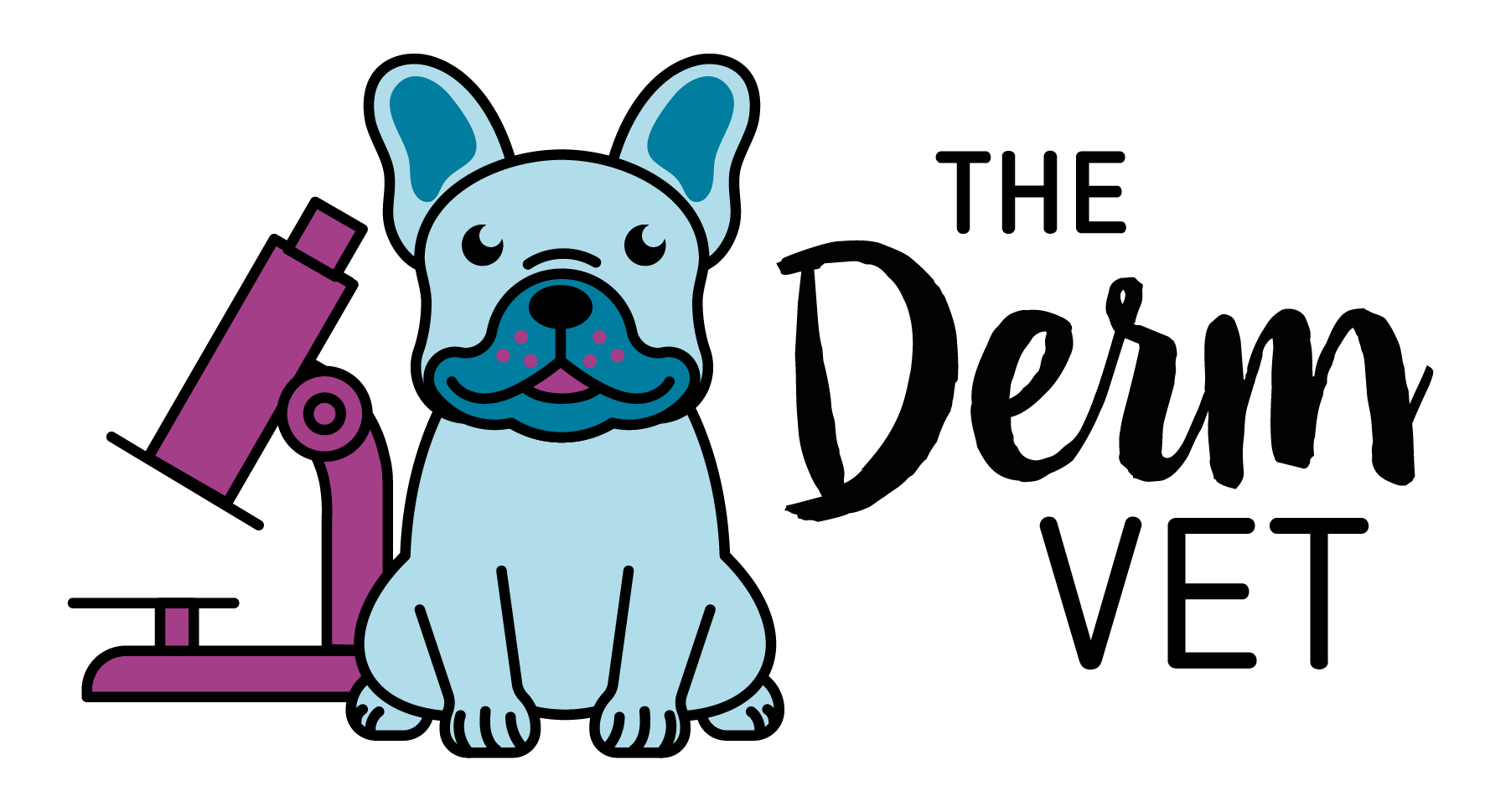Is that dog’s itching habit? Is it stress? Should he be referred to a behaviorist or dermatologist? Well, the answer is not always straightforward, so I got together with Dr. Chris Pachel, DVM, DACVB, CABC, from Animal Behavioral Clinic (Portland, OR) to discuss the overlap between dermatology and behavioral cases in episode 43 of The Derm Vet Podcast. Here are just a few of the questions we covered in the episode!
If we look at an overgrooming cat, how common is it really related to behavior? Not that it is impossible, but do you think that’s the first place to start?
Overgrooming IS a behavioral change, right? The animal is behaving differently, so therefore behavioral. Of course!
The question is what is the REASON behind the behavioral change? While it is possible the reason is stress or anxiety, the more likely scenario is that these cats are having derm-related issues, and the itching and overgrooming is secondary to that. Stress can certainly be a secondary component that a behaviorist can help to address, but until the root of the problem is being treated, such as allergies, the cat may not be able to find adequate relief.
Can these cases be co-managed?
The short answer is YES, and often, they should be!
Every case is going to be different, and it may be difficult to pinpoint what exactly is setting that cat’s itchiness off. Did it start from inflammation and cause stress? Or did the inflammation result in stress, which resulted in another behavior that caused the flare up?
Regardless of cause, both derm and behavioral specialists can help to address the problem and attack it from different directions to collaborate on a solution.
That’s the fascinating thing about BOTH of these specialties. There can be a lot of crossover. This isn’t a scenario where we can say, “X is the diagnosis, and THIS surgery is the treatment.” It’s more about finding a main anchor treatment while also addressing other factors, such as environmental stressors, diet, lifestyle changes, etc.
It’s about locating all of the puzzle pieces and putting them all together!
How does history play a part in determining what the issue is?
History is SO important. Here is an example—
You have a client who recently moved, and their cat is now overgrooming. We never want to assume the stress of the move is the “culprit” without investigating other factors. Upon digging into history, you might find that the family moves often and their cat normally handles it fine. Maybe the cat also has a history of ear infections, and no connection has been made between those infections and the overgrooming behaviors. Once we can dig deeper and connect the dots, we have a bigger picture view of what could potentially be going on.
What about dogs?
Yes, we cannot forget our canine friends and the question, “is it behavioral, or is it derm?”. Dogs tend to be even less straightforward than cats, and the answer to this can be very complicated with MANY layers. For today, we’ll just take a quick look at the surface level.
One thing to consider with dogs is the behavior is the antecedent condition—the thing that is occurring RIGHT before the licking or grooming occurs. For example, is the dog only licking right after the owner comes home from work? Or is the dog licking after a walk, after dinner, after getting into bed each night, etc. This can be very telling of something behavioral that is setting off that action or if it could be a derm related problem.
Another thing to think about is the manner in which the dog is doing this grooming. There is a difference to be noticed between a dog who is fully relaxed and giving their paw some long, drawn out licks vs. a dog who is stopping mid-walk to whip around and lick or chew at an area as if it needed immediate attention. Those are two very different scenarios, and noticing which is happening is crucial when determining what the underlying cause might be.
There are so many other factors to consider with dogs, but that would need its own podcast episode! (Let me know if I should record that!)
How is setting the expectations for clients similar in both dermatology and behavioral specialties?
In BOTH of these specialties, we want to be upfront with our clients about what a treatment journey might look like without scaring them into thinking it might be too daunting. Both dermatology and behavioral specialties require ongoing caring—there is no “one and done” solution to these things. They’re both going to require small tweaks along the way according to what you’re trying to achieve.
In both cases, the journey can be frustrating if the client isn’t seeing the results they’re hoping for, so it’s important to keep the doors of communication open and allowing them to vent freely about their frustrations. The more trust you can build with the client, the better you can help their pet!
The other thing that is important within both specialties is: “The best plan is the one that will happen.” Meaning that we NEED to listen to our clients about what is a realistic treatment plan that they can commit to within their personal lives. That will look differently for everyone, and we would rather them leave the office with something they will ACTUALLY do than with a plan they’ll toss to the wayside because life will get in the way.
These questions are just the tip of the iceberg when it comes to the intersection of dermatology and behavioral specialties. You can find even more in-depth conversation about this by listening to the full podcast episode with Dr. Pachel. I promise there is more to come on this topic in the future, so please stay tuned and send me ANY questions you might have!
Listen to the full episode here:
https://podcasts.apple.com/us/podcast/43-is-that-pet-stressed-or-itchy/id1490213585?i=1000503483689


